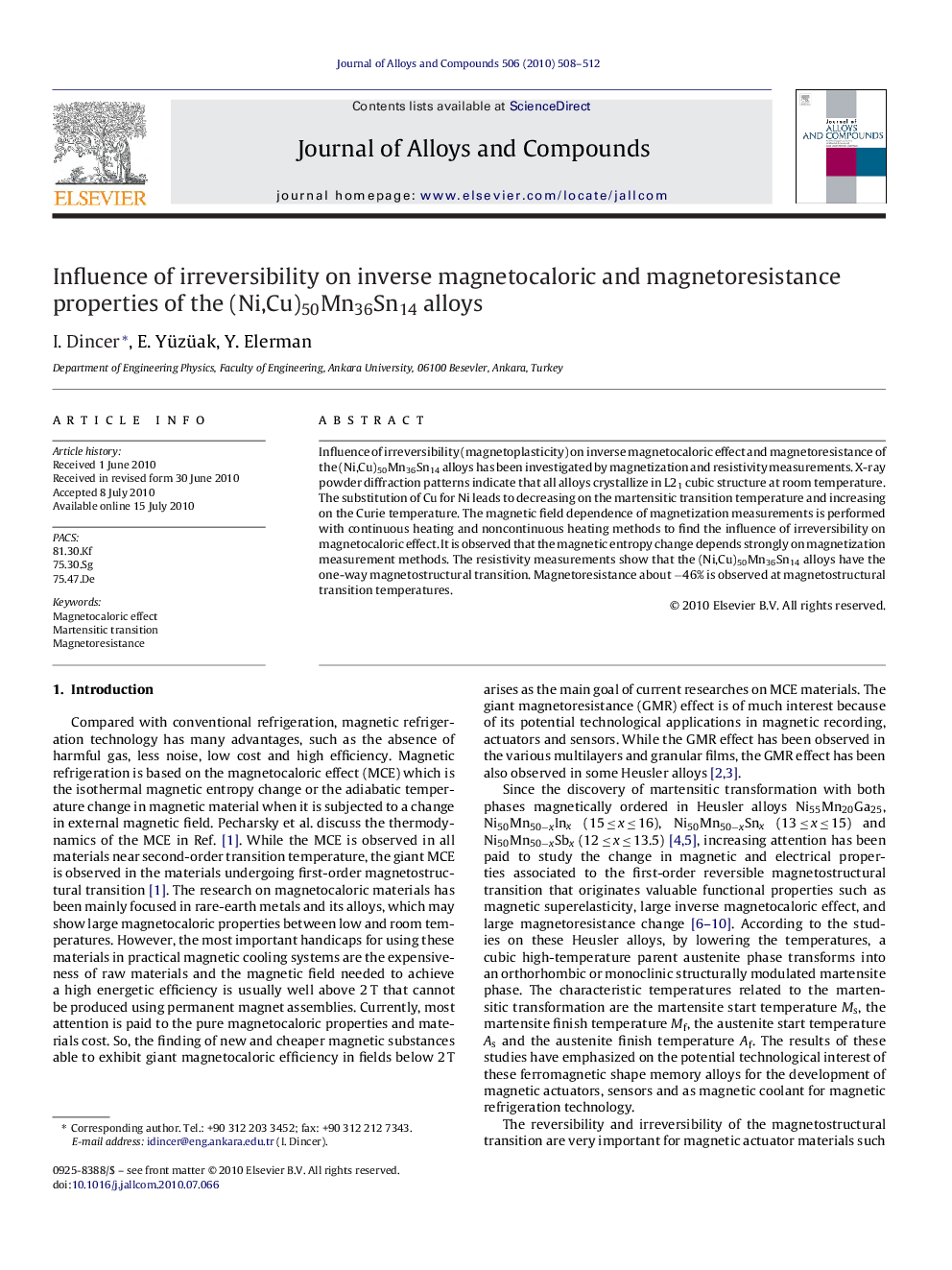| Article ID | Journal | Published Year | Pages | File Type |
|---|---|---|---|---|
| 1617857 | Journal of Alloys and Compounds | 2010 | 5 Pages |
Influence of irreversibility (magnetoplasticity) on inverse magnetocaloric effect and magnetoresistance of the (Ni,Cu)50Mn36Sn14 alloys has been investigated by magnetization and resistivity measurements. X-ray powder diffraction patterns indicate that all alloys crystallize in L21 cubic structure at room temperature. The substitution of Cu for Ni leads to decreasing on the martensitic transition temperature and increasing on the Curie temperature. The magnetic field dependence of magnetization measurements is performed with continuous heating and noncontinuous heating methods to find the influence of irreversibility on magnetocaloric effect. It is observed that the magnetic entropy change depends strongly on magnetization measurement methods. The resistivity measurements show that the (Ni,Cu)50Mn36Sn14 alloys have the one-way magnetostructural transition. Magnetoresistance about −46% is observed at magnetostructural transition temperatures.
Research highlightsOur manuscript is about the influence of irreversibility on inverse magnetocaloric and magnetoresistance properties of the (Ni,Cu)50Mn36Sn14 alloys. As known well, the studies on the magnetocaloric materials for example Ni-based Heusler alloys have increasing attention. We used two different measurements method for the measurements of M(H) curves: continuous and noncontinuous methods to find the influence of irreversibility on magnetocaloric effect. We observed that the magnetic entropy change depends strongly on magnetization measurement methods. The resistivity measurements show that the (Ni,Cu)50Mn36Sn14 alloys have the one-way magnetostructural transition. Magnetoresistance about −46% is observed at magnetostructural transition temperatures. The magnetic field dependence of resistance curves are in a good agreement with the noncontinuous M(H) curves. We think that our study should be a good reference for the people who work about the magnetocaloric effect.
